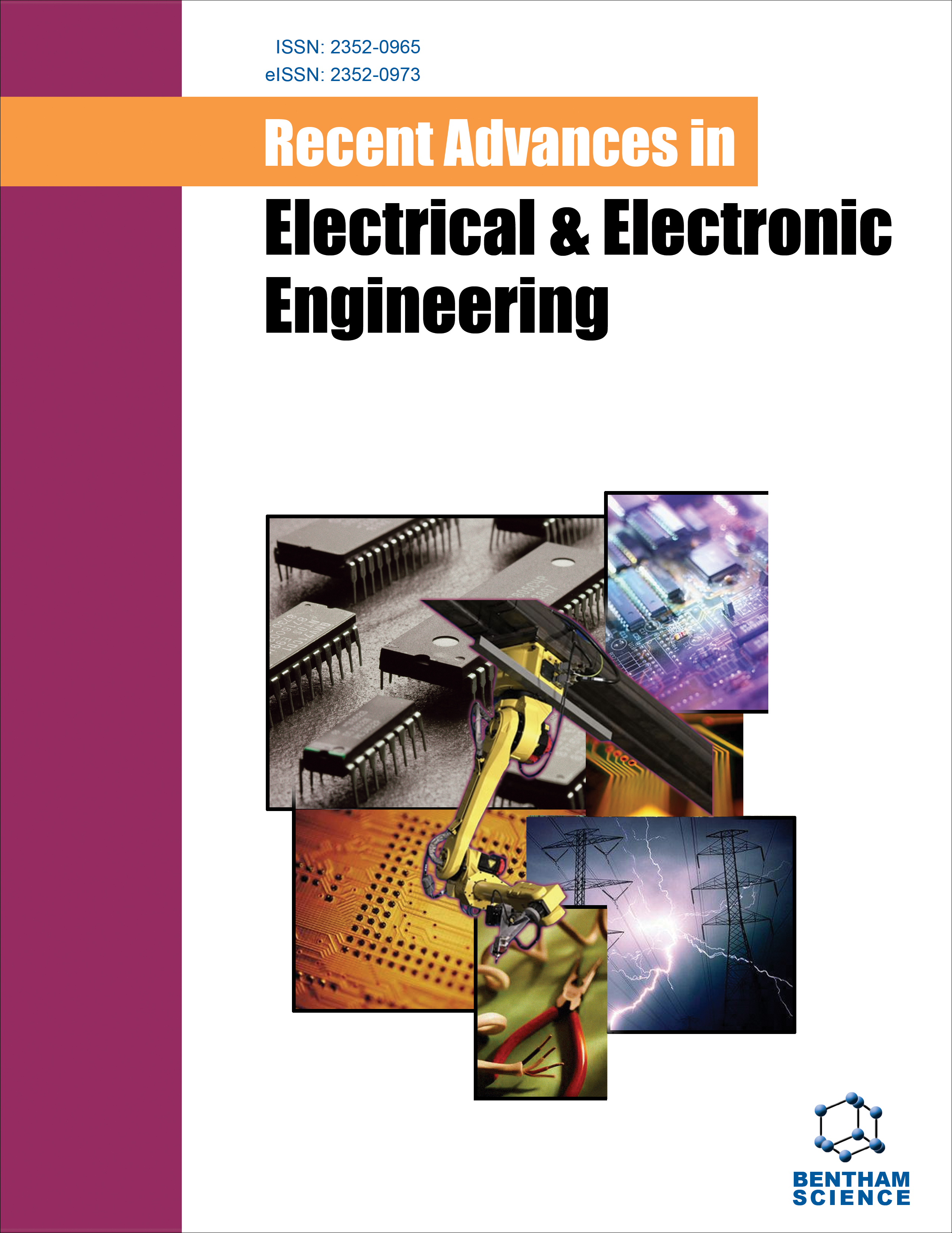Recent Advances in Electrical & Electronic Engineering - Current Issue
Volume 18, Issue 3, 2025
-
-
Current Research and Future Directions in Image Restoration Technology: An Emerging Field
More LessAuthors: Neelam Kumari, Isha Kansal and Preeti SharmaA review and analysis of digital image restoration are provided in this work. The goal of image restoration is to enhance the quality of an image by understanding the physical process that created it. The purpose of picture restoration is to cover up or correct flaws that lower an image's quality. Motion blur, noise, and difficulty focusing the camera are just a few examples of how degradation can manifest itself. When there is mot Read More
-
-
-
An Environmental Objects Feature Detection Algorithm based on Image Detection in the Power Transmission System
More LessAuthors: Zhongxian Zhu, Kewei Cai, Wentao Liu, Yao Du and Ying WangBackgroundThe image processing technology-can be adopted in the power transmission incident detection system, when it is combined with artificial intelligence and machine learning academic knowledge of power transmission surveillance video analysis system, it can automatically detect abnormal objects in the power transmission system. It can quickly and accurately detect abnormal objects, known as environmen Read More
-
-
-
Simulation and Experimental Study on Corona Noise Distribution of UHV Transmission Lines
More LessAuthors: Guo Zhao, Song Haoran, Zhu Heping and Li ShulinIntroductionThe rise of ultra-high voltage AC grids creates corona noise, which is crucial for assessing transmission line environments.MethodsThis paper analyzes corona noise distribution around AC transmission lines using a 3D model for quantitative assessment. We employ the Finite Element Method, and factors like electric field intensity, conductor splitting, and sag are considered. Corona noise is calculated using CEPRI predi Read More
-
-
-
Fault Section Localization Method for Distribution Network based on Synchronous Phasor Measurement
More LessAuthors: Yu Fu, Yue Li, Xiaobing Xiao, Shuo Liu, Yongxiang Cai and Hao LiuBackgroundThe accurate locating of fault sections in a distribution network can lay an effective foundation for the rapid processing of faults. However, the waveform of high-resistance grounding faults is relatively weak, which increases the difficulty of fault feature extraction and localization. In addition, the complex operating conditions and interference factors of the actual distribution network can affect the fault Read More
-
-
-
Fractional Trigonometric Function Approximations in a Regular System
More LessIntroductionLinear fractional differential equations of the commensurable order, specifically those related to fractional trigonometry, pose challenges in terms of analytical solutions.MethodsThe purpose of this article is to present a novel approximate analytical technique to solve linear fractional differential equations of the commensurable order, which are related to fractional trigonometry. This method is used to obtain Read More
-
-
-
Enhanced Computer-aided Digital Imaging Technique for Predictions in Breast Cancer
More LessAuthors: Sushma Nagdeote, Sapna Prabhu and Jayashri ChaudhariBackgroundBreast cancer (BRCA) is the most frequently diagnosed cancer in women, with a rise in occurrences and fatalities. The field of BRCA prediction and diagnosis has witnessed significant advancements in recent years, particularly emphasizing enhanced computer-aided digital imaging techniques, and has emerged as a powerful ally in the prediction of BRCA through histopathology image analysis. A number of Read More
-
-
-
Electric Vehicle Battery State of Charge and Charging Station Distance Estimation Using IoT
More LessAuthors: C.R. Raghavendran, E. Kaliappan and Prabaakaran KandasamyBackgroundThe global transition to green energy and the rapid development of Electric Vehicle (EV) technology, along with falling component costs, have fueled the growing popularity of electric vehicles. To support the widespread adoption of EVs, an efficient and user-friendly charging infrastructure is crucial.ObjectiveThis work aims to propose a comprehensive EV charging system that addresses the rising demand for Read More
-
-
-
Uncertainty Prediction of Offshore Wind Power based on Outlier Processing, Data Noise Reduction and the Deep Learning Method
More LessAuthors: Zhen Yu, Yinguo Yang, Qiuyu Lu, Shuangxi Wu and Yu ZhuBackgroundAccurate prediction of offshore wind power is the basis for promoting the safe and economic operation of offshore wind farms.ObjectiveThis paper proposes an uncertainty prediction learning model based on outlier processing, synchronous wavelet denoising and attention mechanism optimization to achieve accurate prediction of offshore wind power.MethodsFirstly, the isolated forest is adopted to Read More
-
-
-
Design and Synthesis of Circular Antenna Array for Low Side Lobe Level and High Directivity using Artificial Hummingbird Optimization Algorithm
More LessAuthors: Sunil Kumar and Harbinder SinghBackgroundCircular antenna arrays are widely used in 5G, IoT, and beamforming applications of next-generation communications, however attaining the subsidiary lobes along with directivity is still a challenge. The array parameters could be estimated in real-time using a variety of standard approaches, but these methods would tends to lag in maintaining appropriate directivity and even a low side lobe level.Method Read More
-
Most Read This Month Most Read RSS feed
Article
content/journals/raeeng
Journal
10
5
false
en


